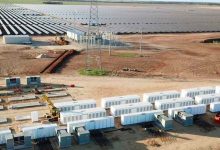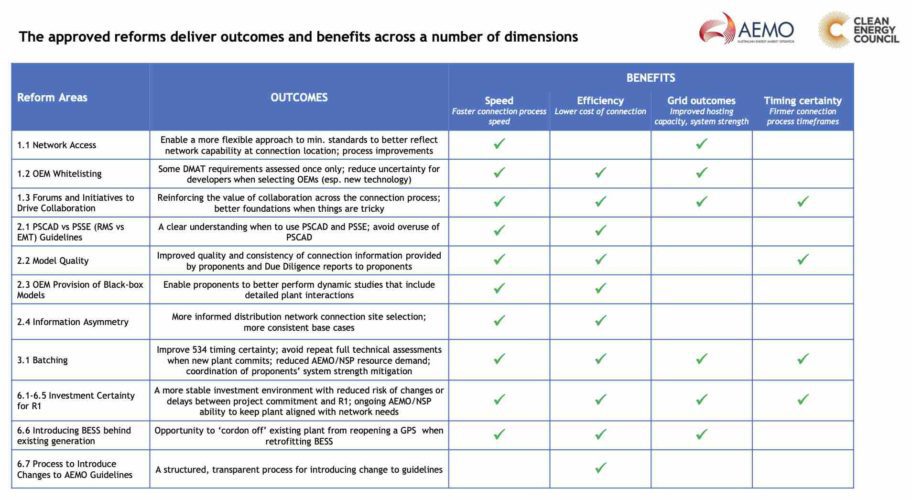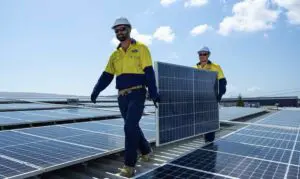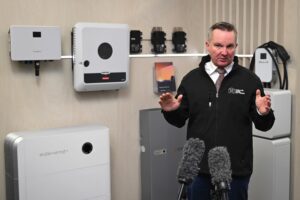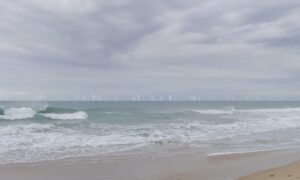Ask any wind and solar project developer about their biggest frustrations in recent years, and it won’t take much prompting to find that the connections process – along with a lack of coherent federal policy – has been the biggest bugbear.
There are not many wind and solar projects that have not been hit by delays and cost over-runs that are a direct result of the complex, and sometimes confusing connections process. Some of those delays have run into years, and cost tens of millions of dollars.
The Australian Energy Markets Operator, which oversees the connections process across the NEM – and manages it directly in Victoria – and the Clean Energy Council have now published a roadmap with 11 clear initiatives that they say can resolve many of the issues that have created anger and frustration on both sides.
Most of it is focused on simplifying and clarifying the process, including the requirement for complex modelling.
There are also some key rule changes afoot, such as exempting existing wind and solar farms from the burden of re-submitting generation performance standards, a complex and potentially complex process, if they want to add battery storage to their facilities.
Many until now have chosen not to, simply because the process is seen as too hard, and too costly.
The reforms are critical, because without them and the added infrastructure to accommodate the new capacity, there is little hope of reaching the new aspirational targets for renewables by 2030, where even the current Coalition is assuming a 69 per cent renewables share, with AEMO at 79 per cent and Labor at 82 per cent.
“We are witnessing the biggest transformation of energy supply and demand in the history of the National Electricity Market as Australia’s power systems decarbonise and decentralise at pace,” AEMO CEO Daniel Westerman said in a statement.
“We have an opportunity to guide the path not only for Australia but, in fact, the world, about how to integrate high levels of renewables into future energy systems.”
But Westerman admits that the current system is struggling to cope, which will have an impact on the more than $100 billion of new investment, and more than 130GW of new capacity, that is expected to be built as the grid surges towards 100 per cent renewables.
“It’s critical to get the connections process right for the sake of project developers, investors, local communities and energy consumers,” he says.
“We know the connections process has been a major bottleneck. Our existing processes and frameworks weren’t designed for the volume or pace of new inverter-based resources, or for the level of competition in connections.”
Clean Energy Council CEO Kane Thornton says grid connection has emerged as the single greatest challenge for renewable energy projects since at least 2019, and the issue is acting as a stop to the enormous capital flows that should be flowing into the Australian economy through clean energy projects.
“The Connection Reform Initiative stands out as a new model for innovation and collaboration in solving such a complex problem,” he said in a statement
“I want to thank the hundreds of people from across the energy sector for their effort and contribution, particularly the CEC’s members and AEMO, our co-sponsor for this Initiative.
“A reformed connection process is now within our grasp, providing greater efficiency and certainty. It’s the certainty that will be crucial if we are to accelerate the deployment of our world class renewable energy and Australia’s efforts to decarbonise our electricity sector and achieve net zero emissions long before 2050.
The two organisations say the reforms span many areas, some are described as “transformational”, and others more incremental.
This list above describes the main reforms. It’s mostly about clarity, avoiding duplication and clear communications of any changes.
Some of them are significant, such as the more flexible approach to minimum standards to reflect the realities of network capabilities, the issue of “batching” which should give greater clarity over the timing of connections, the implication of the R1 registration process, and the issue over batteries.
It is often forgotten that battery storage is almost impossible to add to existing wind and solar farms. They can be located together, but it is impossible to operate them “in sync” because of the registration and dispatch process.
Some of these issues are being addressed through various other rule changes, but the key one here is to remove the roadblock that was caused by the rules that dictated if battery storage was added to existing wind or solar farms, they would need to re-submit their GPS.
Given the number of changes made to the GPS requirements since many were built, this was seen as an impossibility by many developers keen to add battery storage to improve the economics of their projects.
Good, independent journalism takes time and money. But small independent media sites like RenewEconomy have been excluded from the millions of dollars being handed out to big media companies from the social media giants. To enable us to continue to hold governments and big business to account on climate and the renewable energy transition, and to help us highlight the extraordinary developments in technology and projects that are taking place, you can make a voluntary donation here to help ensure we can continue to offer the service free of charge and to as wide an audience as possible. Thank you for your support.

